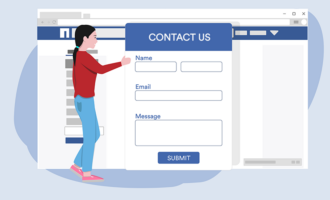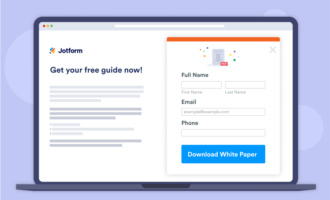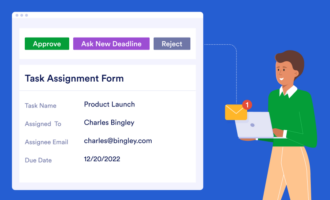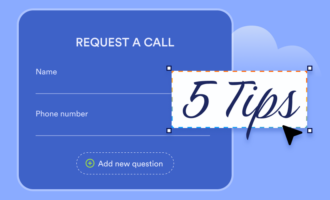Tips to get referrals for your business
- Making referrals a core growth strategy
- Focusing on referrals for small businesses
- Encouraging referrals
- Making sure your customers are happy
- Leveraging influencers and brand ambassadors
Marketing has become something of a science; digital marketing is now a speciality taught in colleges and universities. Yet for all the sophisticated algorithms available to sellers elbowing each other aside in hopes of gaining the attention of finicky customers, those who know how to get referrals are the ones who ultimately succeed.
Customer referrals are the gold standard for measuring the value of your brand, and they’re fundamentally important to local businesses. Whether your business is in retail, professional services, casual dining, or personal care, the most reliable source of new clients and customers are your currently satisfied clients and customers.
As valuable — and gratifying — as a customer referral is, remarkably few companies actively encourage customer referrals.
Even if a smaller business is confident their customers are willing to refer their friends and family, building and managing a referral program might seem like just another good idea they have no time for. That assumption both understates the potential benefits of a customer referral program and overstates how complicated one is to manage.
Making referrals a core growth strategy
A number of huge companies got where they are today with highly successful customer referral programs. The customer referral program at Dropbox, the seemingly ubiquitous cloud-based file storage and sharing service, is perhaps the most studied example — and certainly among the most frequently cited.
Drew Houston and Arash Ferdowsi, who had been students at MIT, founded Dropbox in 2007. They were far behind the competition from day one.
A competing startup, Mozy, had already been in business for two years when Dropbox launched. Another, Carbonite, had raised $48 million by the time Dropbox had raised its first $1.2 million. Investors told the Dropbox founders in one meeting after another that the cloud storage market was already crowded.
Dropbox retained the services of master marketer Sean Ellis, the person who coined the term “growth hacking” and founded GrowthHackers.
Ellis took a deep dive into Dropbox’s user data and was immediately struck by the fact that existing users had referred one in three new users. There was clearly immense potential in that organic word-of-mouth excitement, but Dropbox needed to harness that potential if it wanted to grow fast enough to stay relevant.
Dropbox decided to encourage referrals by rewarding both the referring customer and the friend they referred with additional storage space at no charge. New signups increased 60 percent overnight.
The Dropbox team monitored results, systematically evaluated the response to their referral program marketing, and tweaked accordingly. In the first quarter of 2010, Dropbox users were sending 2.8 million invitations to their friends every month. Within 15 months of launching the referral program, the number of Dropbox users had increased an astounding 3,900 percent, from 100,000 users to 4 million.
Focusing on referrals for small businesses
People know, whether they base that knowledge on research or direct experience, that an unhappy customer is more likely to complain than a happy customer is to offer praise.
The foundation of every successful referral program is a commitment to customer satisfaction. Encouraging customers to recommend your business isn’t a smart move unless you’re confident they have every reason to sing your praises and nothing to complain about.
No form of marketing is more persuasive than a person with nothing to gain telling another person in search of specific products and services that a particular business is trustworthy.
This is why so many customer service-focused businesses have referral programs that encourage customers to recommend their friends try the business or to suggest that the business contact the friend. Referrals are too valuable for business owners to simply hope for an unsolicited one.
In fact, these kinds of referrals are a step above a customer leaving a positive comment on a company website or on its Google My Business page. While these are also valuable, nothing rivals word-of-mouth referrals, particularly for certain types of businesses.
Reading a good online review merely leaves a potential customer with an open mind about the business, but a referral from a person the customer knows is often all they need to choose that business.
Encouraging referrals
Getting a referral from a happy customer is a great compliment, but making referrals the engine of your growth strategy will likely require encouraging customers to tell their friends about your business. To do this effectively, you need to know your customers well.
A good way to get started encouraging referrals is to use customer relationship management (CRM) software to stay in contact with customers for follow-up marketing. You want to know who’s reading your email blasts, who’s a repeat customer, and which of your offerings is most in demand.
Another effective communication tool is a customer survey, which you can quickly create using Jotform survey templates.
Offering an incentive for referrals unsurprisingly results in many more referrals than simply putting up a sign that says, “We appreciate your referrals.”
Making sure your customers are happy
No referral program can succeed unless the company and what it offers are both good. Are your existing customers loyal? Are some already recommending the company just because they’re enthusiastic about it?
Remember, Dropbox discovered customer referrals were driving a third of its growth before the company shifted its focus to encourage customer referrals. That’s arguably the most important lesson to learn from the Dropbox example.
Another important lesson to learn from the Dropbox example is that it offered an incentive it could easily afford. The team knew there was demand for affordable cloud data storage, and they had lots of available storage space, so they offered free space for both the customer making the referral and the new customer.
What do you offer that your customers want more of and you could affordably offer as an incentive for a referral?
Leveraging influencers and brand ambassadors
What if your brand is new, and, while you’ve had encouraging initial sales, you don’t yet have enough customers to really get rolling with a referral program? One solution might be to retain the services of well-matched social media influencers.
The key is to find an influencer who is in sync with your brand and your products. You can negotiate a deal using this Jotform influencer contract template, and then start generating contacts and social media postings.
As your customer base grows, some individual customers will emerge as especially enthusiastic about your offerings. Cultivating a brand ambassador program is an excellent method for recognizing these customers. Use this Jotform brand ambassador contract template to formally recognize your most prized customers.
A company that encourages and appreciates customer referrals is probably appropriately focused on customer service and product quality. Those are the fundamentals of business success — and customer referrals are the most effective way to spread the word.
Photo by Nataliya Vaitkevich















































Send Comment: